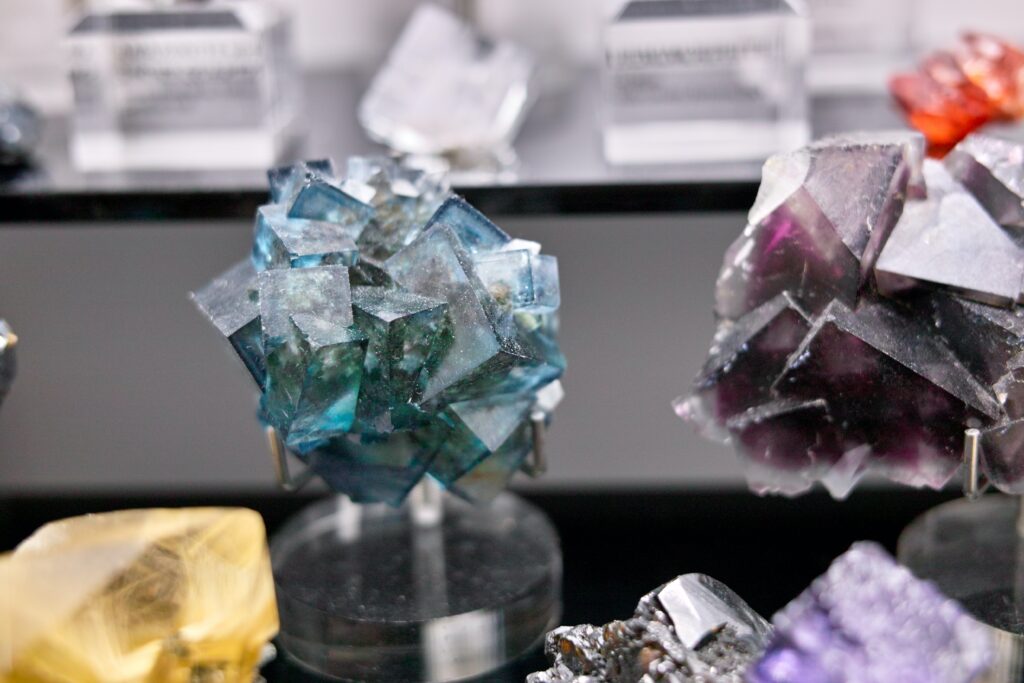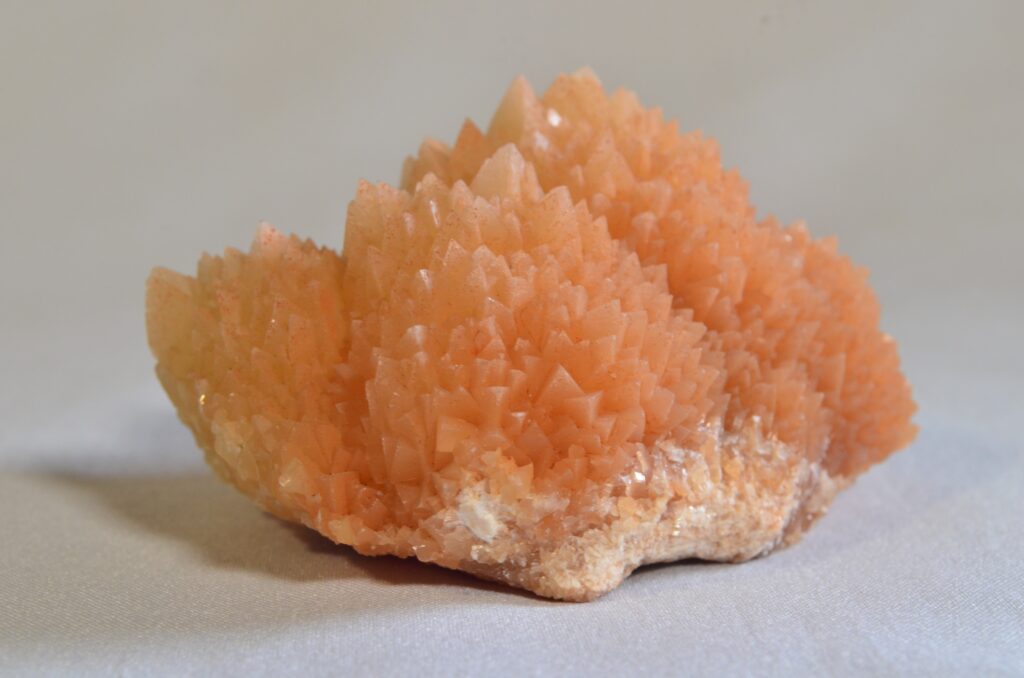
Imagine you’re strolling through a jewelry store, captivated by the sparkling beauty of gemstone-adorned rings, necklaces, and bracelets. As you admire the craftsmanship and contemplate making a purchase, a question pops into your mind: Are there ethical considerations when buying jewelry with gemstones? In a world increasingly focused on sustainability and ethical sourcing, it’s crucial to explore the ethics behind the precious gemstones we covet. Let’s embark on this journey together, unraveling the complexities and shedding light on the ethical considerations surrounding jewelry adorned with gemstones.

Check out our TOP three Recommended products
Environmental Impact of Gemstone Mining
Deforestation and Habitat Destruction
Gemstone mining often involves clearing large areas of land, leading to deforestation and habitat destruction. The process of extracting gemstones requires heavy machinery and extensive excavation, resulting in the loss of trees and vegetation. This loss of habitat can have detrimental effects on local wildlife populations, leading to a decline in biodiversity.
Water Pollution and Depletion
Gemstone mining can also have significant impacts on water sources. During the extraction process, chemicals such as cyanide and mercury may be used, which can contaminate nearby rivers and streams. This pollution not only affects aquatic life but also poses risks to human health if consumed. Additionally, the excessive water usage in mining operations contributes to water depletion, especially in areas already prone to water scarcity.
Soil Erosion and Degradation
Furthermore, gemstone mining involves the removal of topsoil and exposes the underlying soil to erosion. The extraction process disrupts natural drainage patterns, leading to increased erosion and sedimentation in nearby water bodies. This can have cascading effects on the local ecosystem, impacting soil fertility and agricultural productivity. The long-term degradation of soil quality can also hinder the regeneration of vegetation, perpetuating the cycle of habitat destruction.
Human Rights and Labor Conditions
Exploitation of Miners
Gemstone mining is often associated with exploitative labor practices. Many mining operations occur in developing countries with lax labor regulations, enabling exploitation of workers. Miners may be subjected to long working hours, low wages, and dangerous working conditions. The lack of legal protection and oversight leaves miners vulnerable to mistreatment and exploitation by unscrupulous companies.
Child Labor
Tragically, gemstone mining has also been connected to child labor. In some regions, children are forced to work in hazardous mining conditions, robbing them of their right to an education and exposing them to health and safety risks. Child labor not only deprives children of their childhood but perpetuates a cycle of poverty and inequality for affected communities.
Unsafe Working Conditions
Gemstone mining can be a perilous activity, with miners often working in unsafe conditions. The lack of proper safety equipment and training puts miners at risk of accidents, ranging from landslides and tunnel collapses to exposure to toxic chemicals. These hazardous working conditions can have severe consequences for the miners’ health and wellbeing.
Check out our TOP three Recommended products
Conflict Gemstones
Illicit Trade and Financing Armed Conflict
Conflict gemstones, also known as blood diamonds, are gemstones that have been mined and sold to finance armed conflict or human rights abuses. The illicit trade in conflict gemstones perpetuates violence, fuels conflict, and engenders human suffering. This trade undermines peace efforts and contributes to instability in affected regions.
Blood Diamonds
Blood diamonds have gained notoriety due to their association with violence and exploitation. These diamonds are often mined under harsh conditions and sold on the black market to fund armed groups or rebel movements. The proceeds from blood diamonds are used to purchase weapons, prolong conflicts, and perpetuate human rights abuses.
Emeralds from Colombia
In addition to blood diamonds, certain gemstones, such as emeralds from Colombia, have been linked to social and environmental issues. The extraction of emeralds in Colombia has raised concerns about the displacement of indigenous communities and the deforestation of vital ecosystems. The unethical practices associated with emerald mining highlight the need for greater transparency and responsible sourcing in the gemstone industry.
Supply Chain Transparency
Lack of Traceability
One of the key issues in the gemstone industry is the lack of traceability throughout the supply chain. It is often challenging to track the origin of gemstones and determine whether they were obtained through ethical and sustainable means. This lack of transparency makes it difficult for consumers to make informed choices and support responsible mining practices.
Certifications and Standards
To address the issue of traceability, various certifications and standards have been established in the gemstone industry. These certifications, such as the Responsible Jewelry Council (RJC) or the Kimberley Process Certification Scheme (KPCS) for diamonds, aim to ensure that gemstones are sourced in an ethical and environmentally responsible manner. By purchasing certified gemstones, consumers can support companies that adhere to these standards.
Responsible Sourcing Initiatives
Beyond certifications, responsible sourcing initiatives have emerged to promote transparency and accountability in the gemstone supply chain. These initiatives involve collaborating with miners, jewelry manufacturers, and retailers to establish responsible sourcing practices. By actively seeking out and supporting companies involved in these initiatives, consumers can contribute to a more sustainable and ethical gemstone industry.

Treatment of Gemstones
Unethical Gemstone Treatments
Gemstones are often treated to enhance their appearance or durability. However, some treatments can be unethical, involving the use of harmful chemicals or misleading practices. For example, certain treatments may disguise low-quality gemstones as higher-grade ones, deceiving consumers and undermining trust in the industry. It is important for consumers to be aware of these unethical treatments and choose gemstones that have been treated responsibly.
Misrepresentation and Fraud
Misrepresentation and fraud are unfortunately prevalent in the gemstone industry, with some sellers intentionally misrepresenting the quality or origin of gemstones. This deception can result in consumers unknowingly purchasing gemstones of lesser value or supporting unethical mining practices. By educating themselves and asking questions about the authenticity and sourcing of gemstones, consumers can protect themselves from falling victim to fraud.
Synthetic Gemstones
The rise of synthetic gemstones has introduced an alternative to natural gemstones. Synthetic gemstones are created in laboratories and offer a more environmentally friendly and ethical option. These gemstones have the same optical and physical properties as natural gemstones but can be produced without the negative environmental and social impacts associated with traditional mining.
Environmental Conservation Efforts in Gemstone Mining
Sustainable Mining Practices
Efforts are being made to promote sustainable mining practices in the gemstone industry. These practices focus on minimizing the environmental footprint of mining operations, such as implementing reclamation plans to restore land after mining, using renewable energy sources, and reducing water usage. Sustainable mining practices aim to balance the economic benefits of gemstone mining with environmental conservation and social responsibility.
Rehabilitation and Restoration Programs
To mitigate the environmental impacts of gemstone mining, rehabilitation and restoration programs have been implemented. These programs involve rehabilitating mined areas by planting trees, restoring soil fertility, and supporting the regeneration of native vegetation. By restoring ecosystems affected by mining, these programs contribute to the long-term sustainability of the industry.
Ethical Gemstone Certification Bodies
Ethical gemstone certification bodies play a crucial role in promoting responsible mining practices. These organizations evaluate and certify gemstone companies based on their adherence to ethical and sustainable standards. By supporting companies certified by these bodies, consumers can help drive positive change in the gemstone industry and encourage others to adopt ethical practices.

Corporate Social Responsibility
Ethical Sourcing Policies
Corporate social responsibility (CSR) in the gemstone industry involves the implementation of ethical sourcing policies. Companies committed to CSR prioritize responsible mining practices, fair treatment of workers, and environmental conservation. By supporting companies with strong ethical sourcing policies, consumers can contribute to a more sustainable and socially just gemstone industry.
Community Development Programs
Gemstone companies can make a positive impact on local communities through community development programs. These programs focus on improving the social and economic well-being of mining communities by investing in infrastructure, healthcare, education, and vocational training. By supporting companies that prioritize community development, consumers can help uplift communities affected by gemstone mining.
Fair Trade Initiatives
Fair trade initiatives aim to create a fair and transparent trading system for gemstones. These initiatives prioritize fair wages, safe working conditions, and environmental sustainability. By purchasing gemstones from fair trade initiatives, consumers can support the livelihoods of small-scale miners and ensure that their purchases contribute to positive social and environmental change.
Alternative Approaches to Gemstone Consumption
Lab-Grown Gemstones
Lab-grown gemstones offer a sustainable and ethical alternative to mined gemstones. These gemstones are created in laboratories using techniques that mimic the natural formation process. Lab-grown gemstones have a smaller environmental footprint, avoid the social issues associated with mining, and often cost less than their mined counterparts. Choosing lab-grown gemstones helps reduce the demand for traditional mining and supports a more sustainable gemstone industry.
Vintage and Pre-Owned Jewelry
Another alternative to purchasing newly mined gemstones is to opt for vintage or pre-owned jewelry. Buying vintage or pre-owned pieces reduces the demand for new gemstones and minimizes the environmental impact associated with mining. Additionally, vintage jewelry often carries a unique charm and history. By embracing vintage jewelry, consumers can enjoy beautiful gemstones while making a sustainable choice.
Supporting Artisanal and Small-Scale Mining Communities
Artisanal and small-scale mining (ASM) communities often face significant challenges in terms of labor conditions, access to resources, and market opportunities. However, by supporting these communities, consumers can contribute to their economic empowerment and sustainable development. Purchasing gemstones directly from ASM communities or from companies that collaborate with them can provide a lifeline for these vulnerable groups and promote responsible mining practices.

Consumer Education and Awareness
Understanding Gemstone Origins
Consumer education plays a vital role in promoting ethical gemstone consumption. By understanding the origins and potential impacts of gemstones, consumers can make more informed decisions when purchasing jewelry. They can seek out information about the mining practices, labor conditions, and environmental considerations associated with specific gemstones, enabling them to support ethical and sustainable options.
Researching Jewelry Brands
Researching jewelry brands is another important aspect of responsible consumer behavior. By examining a brand’s commitment to ethical sourcing, transparency, and sustainability, consumers can identify companies that align with their values. They can look for brands that provide information about their supply chain, certifications, and responsible sourcing initiatives. Supporting reputable and ethical jewelry brands helps drive positive change in the industry.
Supporting Ethical Jewelers
Choosing to support ethical jewelers is another way to encourage responsible practices in the gemstone industry. Ethical jewelers prioritize transparency, responsible sourcing, and sustainable business practices. By purchasing jewelry from these jewelers, consumers can be assured that their gemstones have been sourced and crafted with consideration for the environment and the wellbeing of mining communities.
Government Regulations and Industry Accountability
Certification and Voluntary Compliance
Government regulations and industry certifications play a crucial role in promoting accountability in the gemstone sector. Certification schemes, such as the Kimberley Process for diamonds, help ensure that gemstones are sourced and traded in a responsible manner. Governments can also implement regulations that require transparency in the gemstone supply chain, encouraging companies to comply with ethical and environmental standards.
Regulating Supply Chain Practices
Regulating supply chain practices is essential to address the ethical considerations in gemstone mining. Governments can introduce legislation that mandates transparency and traceability throughout the supply chain, making it easier for consumers to identify ethically sourced gemstones. By holding companies accountable for their supply chain practices, governments can help eliminate human rights abuses and environmental degradation in gemstone mining.
Global Efforts to Address the Issue
On a global scale, various initiatives and organizations are working to address the ethical considerations of gemstone mining. The Responsible Jewelry Council (RJC), the Diamond Development Initiative (DDI), and the Fairtrade Gold initiative are just a few examples. These organizations collaborate with governments, the jewelry industry, and civil society to promote ethical practices, advocate for fair treatment of miners, and drive sustainable development in mining communities.
In conclusion, the environmental and ethical considerations of gemstone mining are crucial aspects to consider when purchasing jewelry. The impacts of gemstone mining on deforestation, water pollution, human rights abuses, and conflict are significant. However, there are efforts underway to promote responsible mining practices, improve transparency in the supply chain, and support sustainable development in mining communities. By educating ourselves, supporting ethical initiatives, and making informed choices, we can contribute to a more ethical and sustainable gemstone industry.
